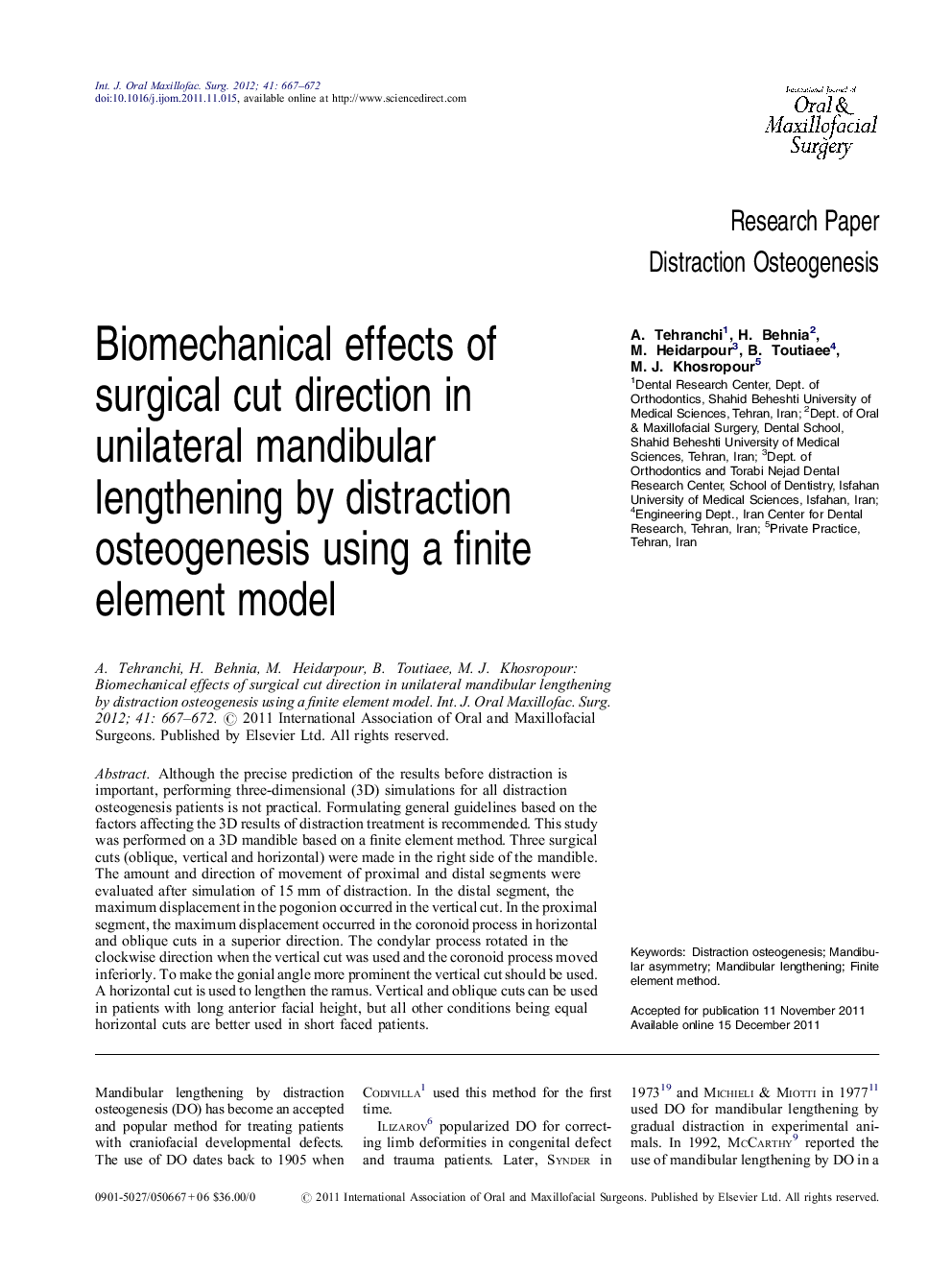| Article ID | Journal | Published Year | Pages | File Type |
|---|---|---|---|---|
| 3133366 | International Journal of Oral and Maxillofacial Surgery | 2012 | 6 Pages |
Although the precise prediction of the results before distraction is important, performing three-dimensional (3D) simulations for all distraction osteogenesis patients is not practical. Formulating general guidelines based on the factors affecting the 3D results of distraction treatment is recommended. This study was performed on a 3D mandible based on a finite element method. Three surgical cuts (oblique, vertical and horizontal) were made in the right side of the mandible. The amount and direction of movement of proximal and distal segments were evaluated after simulation of 15 mm of distraction. In the distal segment, the maximum displacement in the pogonion occurred in the vertical cut. In the proximal segment, the maximum displacement occurred in the coronoid process in horizontal and oblique cuts in a superior direction. The condylar process rotated in the clockwise direction when the vertical cut was used and the coronoid process moved inferiorly. To make the gonial angle more prominent the vertical cut should be used. A horizontal cut is used to lengthen the ramus. Vertical and oblique cuts can be used in patients with long anterior facial height, but all other conditions being equal horizontal cuts are better used in short faced patients.
